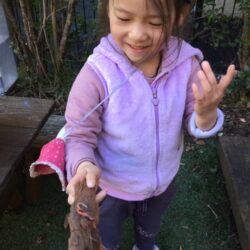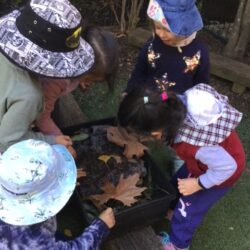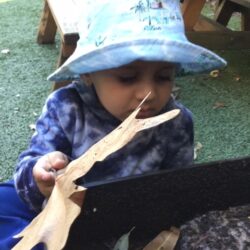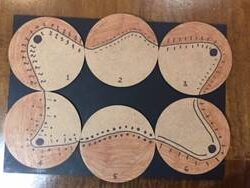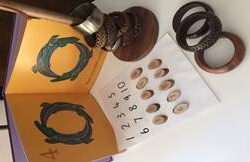Johnson House
Story by Educator Alisa
Combining Johnson House children’s interests in sustainable practices and nature play, we have been revisiting tending our worm farm. In the last month we have continued feeding the worms and using the worm juice to water our garden beds. We have noticed that the worm farm is beginning to become mushy due to the different fruit and vegetable peels that are decomposing in it.
The children have been collecting a variety of leaves, such as big maple leaves, gum leaves and fan leaves. Surprisingly, they remembered all the leaves’ names especially the fan leaves which they call ‘gingko leaves.’ As they walked through the dried leaves in the Goose Paddock, the children could not help but listen to the scrunching noise they made. It is evident that it is winter, as most of the leaves and fruits on the ground have begun to go brown, harden and dry up.
The children were invited to put the dried leaves they had collected in the worm farm. They carefully arranged these on top so as not to disturb the worms that are resting and eating below. Some of the children were really curious and held a worm or two on their hands. Others used bark or a big leaf to let the worms wriggle on these. They continued to admire the worms and wondered how they transform the scraps into fertilisers using their small bodies, and they still remember how to distinguish the young worms from the adults.
Having a worm farm at Johnson House encourages children to become involved in sustainable practices, such as reducing the amount of waste we produce. They continue to be involved in gardening and to see the food cycle in action. Having the responsibility of caring for living things in their environment is also fostered. This experience has further increased the children’s knowledge of what constitutes a conducive habitat for worms.
Family Day Care Sydney Wide
Story by Educator Support Officer Maureen
When visiting Family Day Care Educator Nicola in Erskineville she showed me how learning does not have to cost an arm and a leg when resources are sourced and used creatively!
Nicola bought a set of coasters for just $2.00 and a kitchen roll holder for $6.00 and made them into Indigenous matching and counting games. Both experiences were thoughtfully prepared and set up to entice the children’s interest and enable them to practice many skills.
